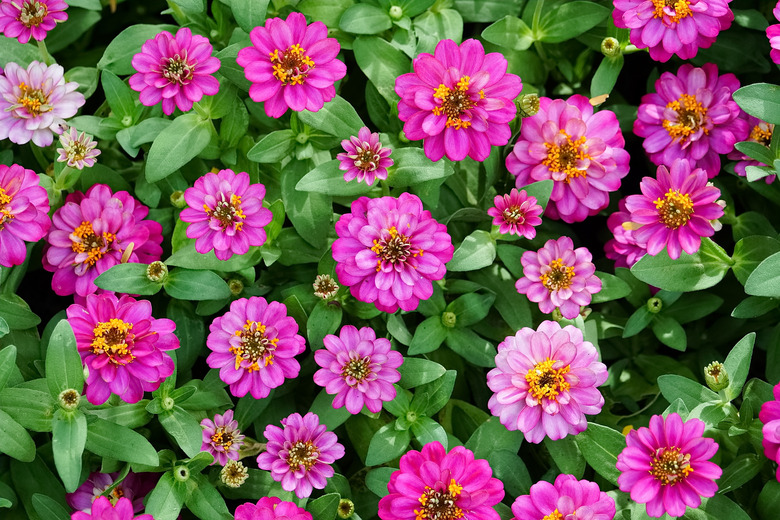How To Care For Zinnias
Zinnias (Zinnia spp.) are popular, easy to grow plants that brighten any summer garden by producing colorful flowers that bloom throughout summer and early fall. Although some species are perennials, most zinnias you'll see in garden centers are annuals that prosper in full sun as a low-maintenance but colorful addition to planting beds across the U.S.
Off to a Good Start
Off to a Good Start
Start zinnias indoors from seeds four to six weeks before your last frost date, or direct-sow zinnia seeds in the garden after the danger of frost is gone. It's important to give plants enough space to grow without crowding, so thin seedlings to allow about 6 to 12 inches depending on species and mature height.
To ensure season-long flowers, sow more seed every two or three weeks until early summer. New plants will produce healthy flower buds when the first plants are beginning to slow their growth and shut down flower production as fall approaches.
Watering and Feeding
Watering and Feeding
Water newly planted zinnias frequently during the first few weeks, keeping the soil moist to establish roots. Once roots are established, water as needed; typically, 1 inch of water each week in the absence of sufficient rainfall. Keep the soil damp but avoid overwatering. Cover the planting area with 3 to 4 inches of mulch to keep the soil moist and weeds at bay. Avoid piling mulch around the base of each plant as too much moisture in that area can promote fungus and rot.
Fertilizing zinnias helps keep new flowers blooming throughout the growing season. Give an initial feeding when seedlings are about 4 inches tall, using a 5-10-5, water-soluble formula. Dilute the fertilizer to 1/4 strength, following all label instructions. Fertilize again in mid-summer to keep the plants healthy and blooming.
Trimming and Deadheading
Trimming and Deadheading
Zinnias are naturally bushy plants, especially when grown in full sun. Pinching new growth on young plants will promote branching. Use clean, sharp garden shears to trim back large stems.
As blooms fade on zinnia plants, cut these off just above the first set of leaves on the flower stem. This helps spur production of new flower buds on the remaining stems and also helps keep the plant looking tidy. Annual zinnias don't survive winter, but leaving a few spent flowers on the plant allows seeds to mature that can drop to the ground. These may produce new, "volunteer" seedlings the following spring if you're growing heirloom plants; otherwise, hybrid zinnias may bear seeds that produce plants unlike the parent plants, or they won't germinate at all.
Preventing Problems
Preventing Problems
Zinnias are susceptible to several fungal diseases, including powdery mildew, which makes leaves look as if they're sprinkled with talcum powder. If not treated, leaves turn brown and dry. Mildew is best prevented by choosing mildew-resistant varieties, spacing plants properly, and watering plants with a soaker hose or drip irrigation that helps keep foliage dry.
Zinnias can attract a few pests, including Japanese beetles and foliage-chewing caterpillars. Such pests can slow plant growth and flower development. Whiteflies and soft-bodied, yellowish aphids also can harm flower production. Rid zinnias of these pests by spraying with insecticidal soap, following product label instructions. Repeat as needed.
